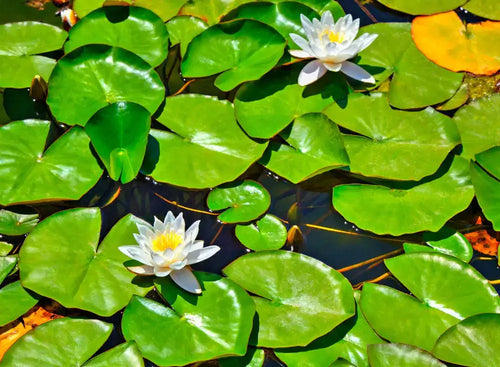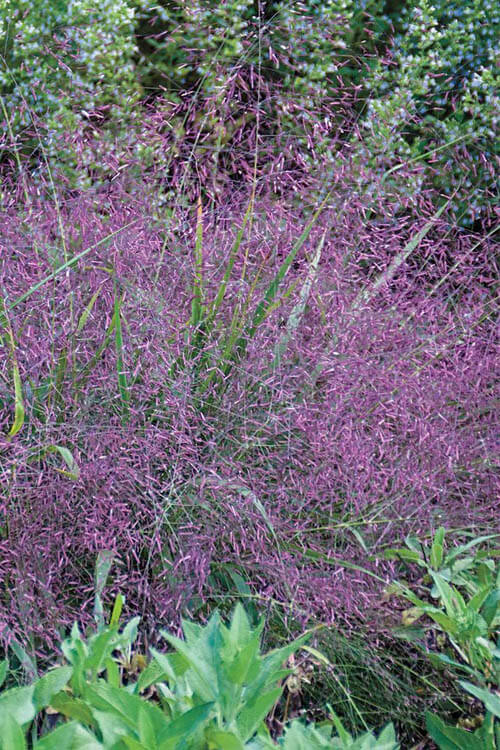Plant History and Folklore
Plants have been an integral part of human history and culture for millennia. They have provided our ancestors sustenance, shelter, and medicine; their importance extends far beyond their biological significance. Throughout history, specific plants have held a special place in the hearts and minds of various cultures, often becoming central figures in rituals, myths, and traditional medicine. In exploring plant history and folklore, we will dive into several specific plants' captivating stories and cultural significance, shedding light on their profound influence on human civilization.
The Sacred Lotus: A Sign of Purity and Enlightenment
The lotus flower (Nelumbo nucifera) is one of the most iconic symbols in Asian culture, particularly in Hinduism and Buddhism. It can be found over 5,000 years ago, making it one of the oldest cultivated plants in the world. The lotus thrives in sludgy waters but appears as a pristine, beautiful flower, which has led to its association with purity and spiritual enlightenment.
In Hinduism, the lotus is the seat of the goddess Lakshmi, representing wealth, prosperity, and good fortune. It is often depicted as a divine flower that springs from the navel of Lord Vishnu, signifying creation and rebirth. Buddhists also revere the lotus as a symbol of purity, enlightenment, and the path to spiritual awakening. The Buddha is often depicted sitting on a lotus throne, and the growth of the lotus from the mud to the surface mirrors the spiritual journey towards enlightenment.
Beyond its symbolism, the lotus has practical uses as well. Its seeds are edible and have been used in Asian cuisine for centuries. Additionally, different parts of the plant have been employed in traditional medicine for their healing properties. With its profound cultural and spiritual significance, the lotus is a testament to the deep connection between humans and the natural world.
Mistletoe: The Enigmatic Plant of Love and Renewal
Mistletoe (Viscum album) is a curious and mystical plant that has captivated human imagination for centuries. It is most famously associated with the holiday tradition of kissing beneath the mistletoe, but its significance extends far beyond this romantic custom.
In ancient Druidic and Celtic cultures, mistletoe was considered a sacred plant, believed to have healing properties and a connection to the divine. As a parasitic organism living on trees without drawing nutrients from the soil, the plant's growth pattern fascinated ancient people. It was seen as a symbol of life's tenacity and renewal.
The custom of kissing beneath the mistletoe has its origins in Norse mythology. According to the myth, the god Balder was massacred by an arrow made of mistletoe, which was the only thing that could harm him. After his resurrection, mistletoe became a symbol of love and reconciliation, and anyone passing under it would exchange a kiss as a sign of goodwill.
Today, mistletoe is a staple of Christmas decorations and traditions. Still, its roots in ancient cultures and mythology highlight its ongoing value as a symbol of love, renewal, and the mystical connection between the natural world and human culture.
Ginseng: The Root of Vitality and Longevity History and Folklore
Ginseng (Panax ginseng) is a prized herb in traditional Chinese medicine that has been revered for its medicinal properties for thousands of years. Known as "Ren Shen" in Chinese, which translates to "man root" or "essence of the earth," ginseng has long been associated with vitality, longevity, and the preservation of youth.
In Chinese folklore, ginseng is believed to embody a mountain spirit, possessing immense wisdom and healing power. Legends tell of people who, after discovering wild ginseng, would become incredibly healthy and live to extraordinary old ages. The shape of the ginseng root itself is said to resemble the human body, reinforcing its association with health and vitality.
Ginseng is used in Chinese medicine to treat many ailments, from fatigue and stress to diabetes and immune system support. It's an adaptogen that helps the body adapt to stress and maintain balance. Ginseng is also highly sought after in the global herbal supplement market due to its potential health benefits.
The cultural and medicinal significance of ginseng reflects the deep-rooted belief in the power of nature to promote health and well-being, an idea that transcends cultures and generations.
The Peony: A Symbol of Wealth and Prosperity
The peony (Paeonia) is a flowering plant that has held a special place in Chinese culture for over two thousand years. Revered for its lush, fragrant blossoms and vibrant colors, the peony is often associated with wealth, prosperity, and honor.
In Chinese folklore, the peony is linked to the legend of Wu Zetian, the only female emperor in Chinese history. According to the legend, peonies bloomed in abundance when she ruled, signifying her prosperity and benevolence. The peony is also associated with the idea of "nobility" in Chinese culture, symbolizing a high social status and honor.
Besides its cultural significance, the peony has long been used in Chinese medicine for its therapeutic benefits. It is believed to have medicinal qualities that can soothe various ailments, including pain, inflammation, and menstrual disorders.
The cultivation of peonies in China has a long history, and various cultivars have been developed to produce different flower colors and forms. The peony remains a popular ornamental plant in China and worldwide, symbolizing beauty, wealth, and good fortune.
The Coca Plant: From Ancient Rituals to Modern Controversy
The coca plant (Erythroxylum coca) holds a complex and controversial place in human history and culture. Indigenous people in South America have cultivated and used coca for thousands of years, viewing it as a heavenly plant with spiritual and healing effects.
In Andean cultures, coca leaves have been used in traditional rituals to connect with the spirit world and seek guidance from deities. The foliage is chewed or brewed into tea to provide energy, alleviate altitude sickness, and combat hunger in high-altitude regions.
However, the coca plant is also infamous for its role in the production of cocaine, a powerful and illegal drug with devastating social and health consequences. The exploitation of coca for cocaine production has led to international controversies and efforts to regulate or ban its cultivation in many countries.
The history of the coca plant illustrates the duality of plants in human culture—how a plant can hold deep spiritual and medicinal significance for one group of people while causing immense harm when misused by another. It serves as a reminder of the complex connection between people and the plants they rely on, a relationship often shaped by cultural, economic, and political factors.
The Rose: Love, Beauty, and Universal Symbolism History and Folklore
The rose (Rosa) is one of the most universally recognized symbols, transcending cultures and periods. Understood for its stunning looks and exquisite fragrance, the rose has been a symbol of love, passion, and beauty for centuries.
In Greek and Roman mythology, the rose symbolized love and beauty and was associated with the goddesses Aphrodite and Venus. The Romans, in particular, used roses in extravagant celebrations and feasts, scattering them as confetti and decorating banquet halls.
The rose is also prominent in Islamic culture, often called the "Queen of Flowers." In Sufi poetry, the rose symbolizes the divine and the spiritual journey, while in Persian culture, the rose garden symbolizes paradise.
In Christianity, the red rose is usually associated with Christ's blood. It represents love, sacrifice, and purity. The rose is also a symbol of the Rosicrucian order, a mystical and esoteric organization.
Beyond its cultural and symbolic significance, the rose has been used in traditional medicine for its various therapeutic properties, including its ability to soothe skin, calm the mind, and alleviate stress.
The rose's enduring symbolism and appeal across diverse cultures underscore its profound impact on human culture and its unique ability to evoke emotions of love, beauty, and spirituality.
Plants have played an indispensable role in shaping human history, culture, and civilization. They have provided sustenance, shelter, and healing but have also served as symbols of spiritual enlightenment, love, and prosperity. The stories of specific plants like the lotus, mistletoe, ginseng, peony, coca, and rose to reveal the rich tapestry of human-plant relationships, spanning myths, rituals, traditional medicine, and everyday life.
These plants, each with unique attributes and symbolism, offer a glimpse into the deep connection between humans and the natural world. They remind us that, beyond their biological functions, plants have been integral to our cultural and spiritual development, enriching the human experience in ways that transcend generations and borders.



















































